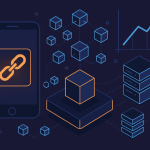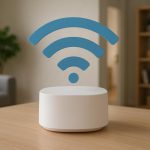Technology has quietly transformed many aspects of our daily lives in recent years. We order groceries with a few clicks, talk to loved ones through screens, and get reminders from our watches to drink more water. But what is one of the most important places technology makes a difference? Healthcare.
Now, hospitals and medical facilities are embracing digital platforms to schedule visits, cure disease, and make the entire process easier – both for patients and healthcare providers. Behind-the-scenes technologies are making hospitals and clinics more efficient and capable of delivering better care – like digital check-in, insurance eligibility verification services, and automated claim submission.
Let’s look closer at how technology is improving healthcare experiences.
How Technology Is Helping Patients
1. Online Appointment Scheduling
Gone are the days when patients had to wait on hold to book a visit. Many healthcare offices now use secure online portals that allow patients to schedule appointments 24/7. They can see available times, pick what works best, and get instant confirmation from their phone or laptop. This saves time, reduces no-shows, and makes the process less stressful.
2. Digital Intake and Paperless Check-In
Instead of completing clipboard after clipboard in the waiting area, patients can fill out forms online before they ever leave home. These online intake forms can include personal details, medical history, medication lists, and consent forms.
3. Telehealth and Virtual Visits
Telemedicine became mainstream during the COVID-19 pandemic and isn’t fading away anytime soon. Video visits enable patients to be accessible to care even when they cannot visit the office. It is a convenient and effective option, mostly for follow-ups, medication questions, mental health care, or even quick diagnoses.
4. Automated Reminders and Messaging
Most clinics now automate reminders by email or text and have reduced missed appointments. The patient can ask for a prescription or lab results without needing to call or visit. This all improves communication and keeps the patient engaged in his or her own care.
5. Easy Access to Records and Results
Patient portals give individuals access to their test results, visit summaries, and care plans. It puts more control in patients’ hands and makes it easier for them to follow up, track progress, and share information with specialists if needed.
6. Smart Medication Management
Some systems offer smart pill dispensers that remind patients when to take their medication. Others alert care teams if a dose is missed or if a prescription needs renewal.
7. AI-Powered Diagnostics
Artificial intelligence is helping providers make more accurate diagnoses and do it faster. For example, some software tools can analyze X-rays or CT scans and flag early signs of disease that the human eye may miss.
AI tools don’t substitute for physicians – they assist them. They are especially important in areas like oncology, radiology, and pathology.
How Technology Is Helping Providers
1. Insurance Eligibility Verification Software
Eligibility verification software, which confirms whether a patient currently has coverage, is among the most time-conserving pieces of software for providers.
This software takes the guesswork out of the equation for admissions staff or billing teams. They can see a patient’s eligibility status, plan details, and responsibilities right at check-in, which means fewer billing mistakes and less time wasted chasing insurance information.
It also keeps providers from having to provide care without knowing whether the care will be paid for, protecting their revenue and reducing claim denials.
2. Electronic Health Records (EHRs)
EHRs have become the norm in nearly all healthcare settings, supplanting paper charts. Doctors and nurses can summon a patient’s complete history, lab results, medications, and allergies with the touch of a few keys. EHRs allow care teams to communicate more efficiently, avoid medication errors, and quickly review a patient’s plan of care.
Most EHRs nowadays also incorporate population health tools, tracking preventive care, and smart alerts for vulnerable patients, and thus are an essential part of modern medicine.
3. Revenue Cycle Management Tools
Billing in healthcare can be complicated, involving many steps from the time a patient is seen until payment on the claim is received. Tools used in revenue cycle management (RCM) help providers track all aspects of the process, beginning with claims submission and denials management.
These systems highlight what needs attention, flag missing info, and give teams a clear view of outstanding payments, ultimately speeding up reimbursement and reducing errors.
4. Clinical Decision Support Tools
These smart systems built into EHRs give providers real-time guidance based on best practices. For example, if a patient’s lab values look unusual, the system might suggest further tests or offer diagnosis ideas. It helps ensure care decisions are based on the latest medical standards and research without requiring the provider to search for every update themselves.
5. Voice Recognition for Charting
Dictating notes once required hours of typing or transcription. Voice recognition programs now enable providers to dictate directly into their EHR, and automatically enter notes, diagnoses, and plans.
It saves time, reduces documentation fatigue, and improves the accuracy of medical records.
6. Digital Care Coordination Platforms
Treating patients is usually a team effort: doctors, nurses, specialists, case managers, and even outside providers. Digital platforms now make it easier for all of them to be on the same page.
These systems instantly share updates, lab results, discharge notes, and care plans.
A Better Experience for Everyone
When used well, technology enhances personal care. Patients spend less time filling out paperwork and waiting on hold. Staff members are freed from repetitive tasks and can focus on the patient before them. Billing teams are more confident in the accuracy of their claims. And providers get paid more efficiently.
There’s still plenty of work ahead to make healthcare even more seamless and affordable. But it’s clear that digital tools play a major role in improving things for everyone involved.
Lynn Martelli is an editor at Readability. She received her MFA in Creative Writing from Antioch University and has worked as an editor for over 10 years. Lynn has edited a wide variety of books, including fiction, non-fiction, memoirs, and more. In her free time, Lynn enjoys reading, writing, and spending time with her family and friends.















